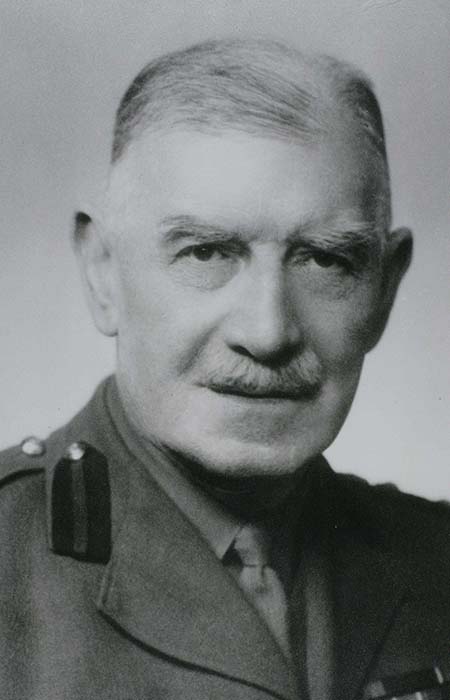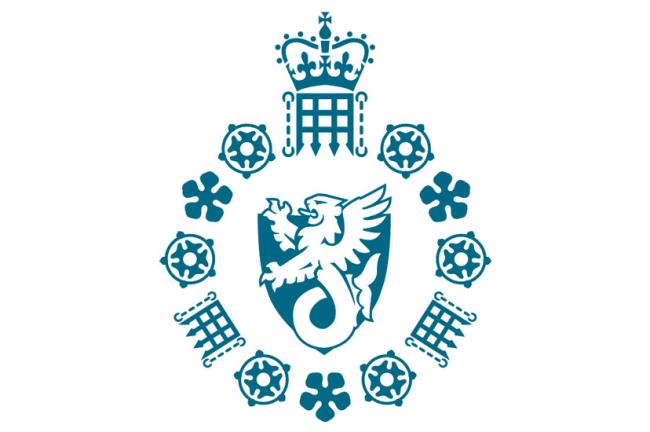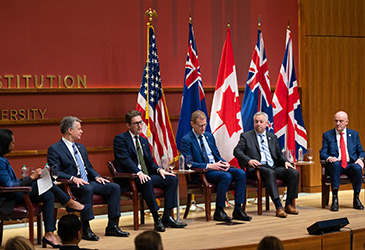
MI5 in World War II
From prison to palace
By Professor Christopher Andrew, author of "The Defence of the Realm".
During the first year of the Second World War the Security Service made what one of its staff called a transition ‘from prison to palace’. Failing to find office space in London for its rapidly expanding staff after the outbreak of War, MI5 moved its headquarters to Wormwood Scrubs, a Victorian prison in West London.
After the prison was bombed during the London Blitz in September 1940, most staff transferred to Blenheim Palace at Woodstock, near Oxford. The Director (as the DG was then known), some other senior officers and counter-espionage operations officers stayed in London at a former MGM building in St James’s Street whose identity was camouflaged by a large ‘To Let’ sign outside.
Winston Churchill, who had been one of Vernon Kell’s chief supporters at the foundation of the Secret Service Bureau in 1909, quickly realised when he became Prime Minister in May 1940 that Kell had stayed on too long. MI5 could not cope with the huge increase in business which followed the end of the ‘Phoney War’ and Hitler’s invasion of France and the Low Countries. An in-house history later acknowledged, ‘By the time of the fall of France [in June] the organisation of the Security Service as a whole was in a state which can only be described as chaotic.’ Kell was sacked. His immediate successor, ‘Jasper’ Harker, was also not up the job.

MI5’s fortunes were rapidly restored by a former head of the Delhi Intelligence Bureau and chairman of the Indian Public Service Commission, Sir David Petrie, who served as Director General from 1942 to 1946. Its main wartime success was taking the lead role in the now celebrated ‘Double Cross System’, which fed disinformation to Germany through turned German agents. The origins of Double Cross went back to an adventurous MI5 double agent in the mid-1930s, the First World War fighter ace, Christopher ‘Mad Major’ Draper, who flew under 15 of London’s 18 bridges in 1931 —a feat which impressed Hitler, among others. Draper did little to deceive the Germans but provided MI5 with important intelligence on how German Intelligence maintained contact with its agents in Britain. That intelligence led to MI5’s discovery of a Welsh-born electrical engineer spying for the Germans, whom it codenamed SNOW.
Shortly after the outbreak of War, SNOW became the first in a series of 120 wartime German agents who were turned by MI5 into double agents. From January 1941 the disinformation passed on by the double agents to German Intelligence was coordinated by the Twenty Committee (so called because the Roman numeral for twenty, XX, is a double cross), chaired by J. C. Masterman, an Oxford historian and international sportsman recruited by MI5. Through the Double Cross System, wrote Masterman later, ‘we actively ran and controlled the German espionage system in this country’.
The greatest of the double agents, in Masterman’s view, was the Catalan businessman Juan Pujol García, who had set out to deceive the Germans even before he became part of the Double Cross System as Agent GARBO. In collaboration with his MI5 case officer, Tomás Harris, GARBO deceived the Germans into believing that, in addition to his own operations, he had a network of twenty-eight highly productive sub-agents, most of them in the UK but some based as far afield as North America and Ceylon (now Sri Lanka).
GARBO played a key role in persuading the Germans that the main target of the D-Day landings in June 1944 was not the Normandy beaches but the area round Calais. Four weeks after the landings began, MI5 reported to Churchill: ‘It is known for a fact that the Germans intended at one time to move certain Divisions from the Pas de Calais area to Normandy but, in view of the possibility of a threat to the Pas de Calais area, these troops were either stopped on their way to Normandy and recalled or it was decided that they should not be moved at all.’ Churchill was also informed that Berlin had awarded GARBO the Iron Cross (Second Class) in recognition of what his German case officer called his ‘perfect and cherished work ... in the supreme and decisive hours of the struggle for the future of Europe’.
Thanks chiefly to the codebreakers of Bletchley Park, who provided indispensable support for the Double Cross System, Britain had better intelligence about Germany during the Second World War than any power had ever had about its enemies in any previous war. The Soviet Union was less well informed about Germany but better informed about its wartime allies than any power had been before. The chief asset of Soviet intelligence against its allies was its ideologically motivated penetration agents, of whom the most important in Britain were the Cambridge Five. MI5’s main handicap in countering Soviet penetration was that, with the recruitment of the art historian Anthony Blunt in June 1940, it was itself penetrated.
Blunt provided a phenomenal amount of intelligence to Moscow as well as running a sub-agent, Leo Long, in British military intelligence. To Soviet intelligence HQ it increasingly seemed too good to be true. In 1943 it concluded that Blunt and the rest of the Cambridge Five must be part of a Double Cross System directed against the Soviet Union. Not until a few months before D-Day did it finally accept that the intelligence provided by the Five was genuine.
Probably the only person in the wartime Security Service who became suspicious of Blunt was the future Director General Roger Hollis. When, almost twenty years later, Blunt confessed to having been a Soviet agent, he told his interrogators, Peter Wright and Arthur Martin, ‘I believe [Hollis] disliked me – I believe he slightly suspected me.’ It was sadly ironic that Wright and Martin, the most damaging conspiracy theorists in MI5's history, should persuade themselves that Hollis, like Blunt, was a Soviet agent.

